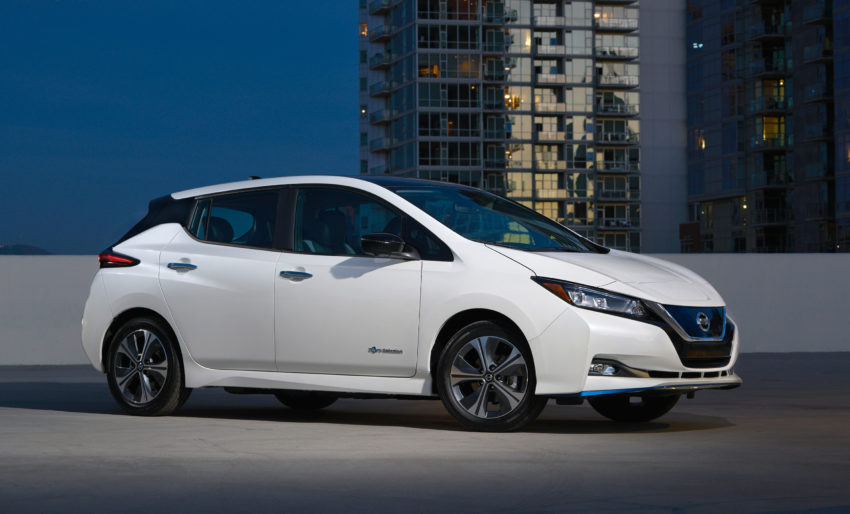EVs and plug-in hybrids from most import brand electric and plug-in hybrid vehicles lost their eligibility for the federal tax credit incentive on Wednesday, when President Biden signed the Inflation Reduction Act of 2022.
[A 2-min., 15-sec. read.]
The IRS ruling immediately ends tax credit eligibility for previously eligible import brand models except U.S.-built versions of the Nissan Leaf and Mercedes Benz EQS EVs and the Audi Q5, Volvo S60 Recharge and BMW 3-Series and X5 plug-in hybrids.

The new climate, energy and healthcare spending law doesn’t take effect until Jan. 1, but the revised clean vehicle tax credit plan it contains states that the “enactment” date of the bill rather than the effective date is when a requirement that plug-in vehicles must be assembled in North America to continue to be eligible for the cost-reducing credit takes effect.
The enactment date of a bill is the date the President signs in, and Biden signed the new law on Aug. 16 after it was approved by the Senate on Aug. 8 and the House on Aug. 12,
Other provisions of the revamped clean vehicles tax credit program won’t become effective until Jan. 1, 2023.
Check the VIN
Because some clean vehicle models are assembled in multiple locations – the Leaf, for example, is built in Japan as well as in Tennessee – consumers relying on the tax credit, a maximum of $7,500, to help make an EV or PHEV affordable should check a vehicle’s identification number, or VIN, to determine where it was made before deciding to buy.
A VIN Decoder website maintained by the Transportation Department lets shoppers easily run such checks from a dealer’s lot. The VIN is displayed on a new vehivle’s window sticker and onve that sequence of letters and numbers is entered, the decoder will display a page of informtation.The last line shows the location of the plant where the vehicle was built.
Only EVs and plug-in hybrids built at plants in the U.S. Mexico or Canada now qualify for any federal tax credit incentive.
Among domestic brands, the IRS list of approved models include North American assembled versions of the Chrysler Pacifica Hybrid (a PHEV), Ford Escape PHEV, Ford F-150 Lightning, Ford Mustang Mach-E, Jeep Wrangler PHEV, Lincoln Aviator PHEV, Lincoln Corsair PHEV, Lucid Air EV, and the Rivian R1T pickup and R1S SUV.
More Restrictions, Some Relief
After Dec. 31, however, a number of other restrictions kick in that could eliminate tax credit eligibility for some of these North American-built EVs and PHEVs. They include country-of -origin requirements for battery minerals and other components and price caps of $55,000 for sedans and $80,000 for trucks, vans and SUVs.
But the new rules also will eliminate sales caps that have cost Genera Motors and Tesla their eligibility for the plug-in vehicle tax credit.
Presuming they can meet all the other requirements, some versions of the Tesla Model 3 and Model Y will once again be eligible after Dec. 31 (all Model S and Model X versions exceed the price caps) as will most General Motors EVs and plug-in hybrids including the Cadillac Lyriq, Chevrolet Bolt and Bolt EUV and lower-trim levels of the GMC Hummer and Chevrolet Silverado EVs.
